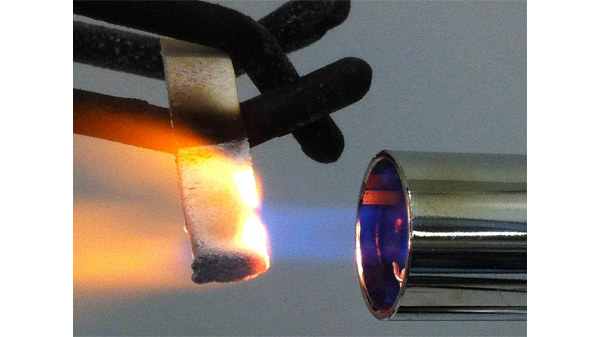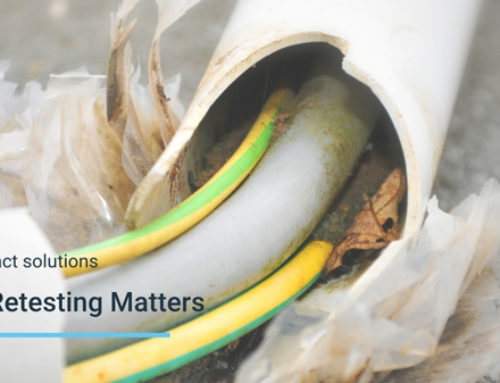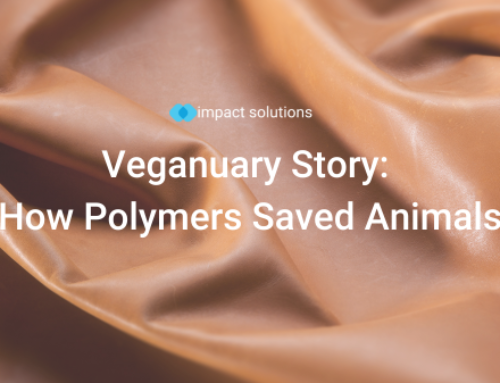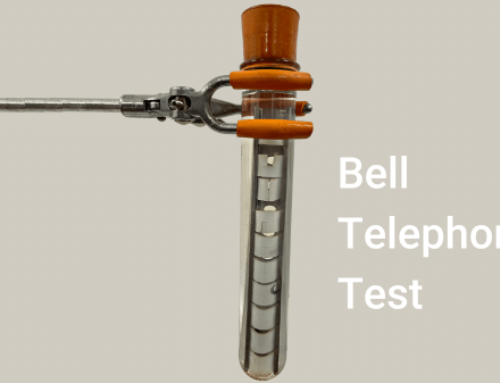Fire safety and the use of plastics in construction has dominated the news over the last few days following the tragedy at Grenfell. The stories circulating this morning are firmly pinning the blame on polyethylene ( PE cladding ) cladding tiles for the rapid spread of the fire up the building. Impact are actual experts in polyethylene (2 of our team have 80 years between them!) and as such know that PE is really not a good idea to have anywhere near a fire, so thought we’d take a look to see why in this case PE tiles had been used.
How the PE cladding was tested
According to the Guardian the cladding tiles used were Rynobond Architect PE tiles, made by Arconic. Please note there is apparently a separate insulation layer provided by another company, but we have focused on the outer cladding as it was reportedly made of PE, and that is what we know.
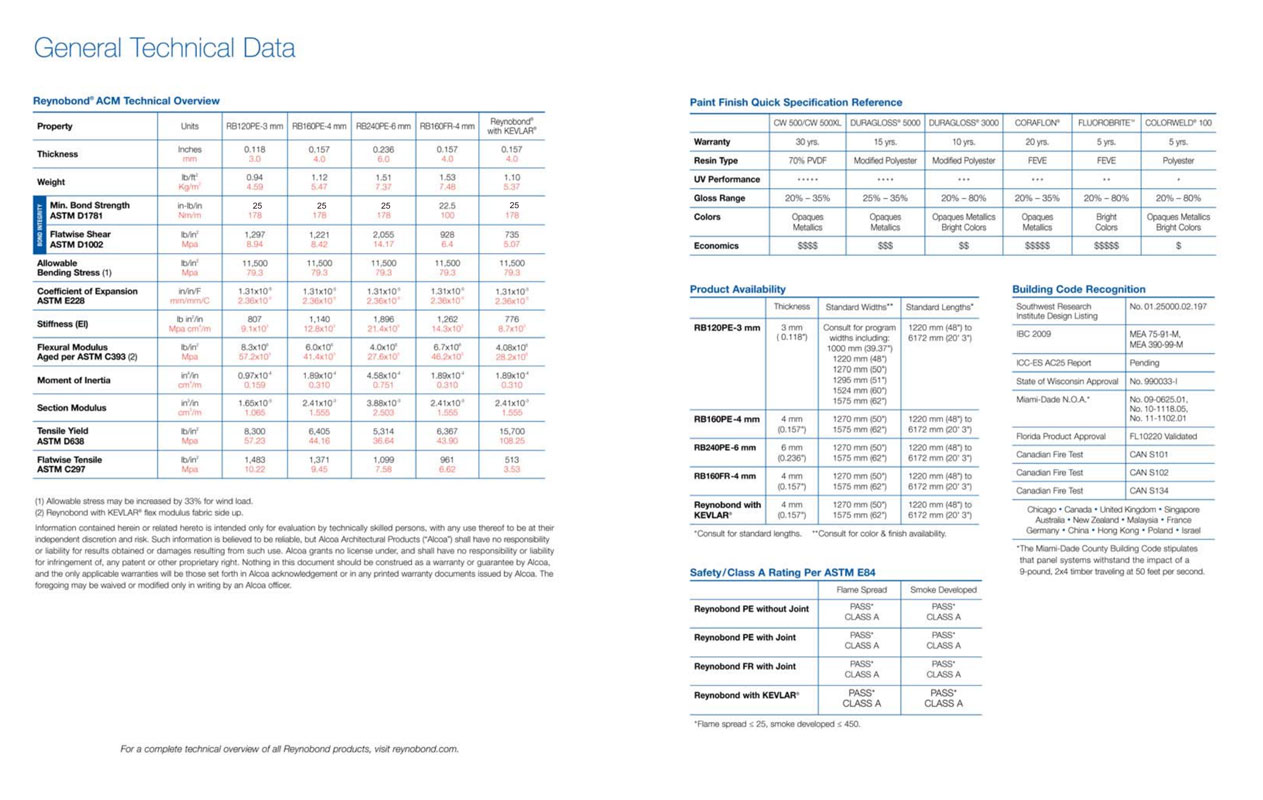
Above is the data sheet on the Arconic website, for two products – the PE based material and the FR based material. The ‘FR’ product is likely to be a steel or similar mineral wool type material, while the PE material is simply extruded PE. Please note we have no information on whether the PE contained flame retardants (which we’d expect it to do).
Attention should be drawn to the ‘safety rating’ in the bottom right. We have enlarged it for you below;
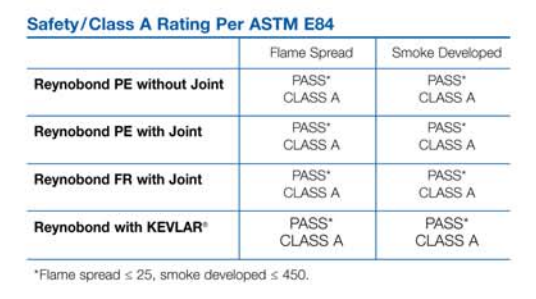
As you can see, all 4 materials achieved a ‘CLASS A’ pass.
That’s correct – they all appear to be the same performance.
Having read this is it possible that the architect has specified PE over FR because according to Arconic they both give the same good test results. If the architect was only using these results, then either one of these materials would have been suitable.
But how can a material such as PE achieve the same level of performance as a flame retardant material? To answer that we next need to look at how the cladding are made. Again, Arconic can help us out with this.

Just to visualise this, the cladding panel would look similar to below, when in the horizontal plane;
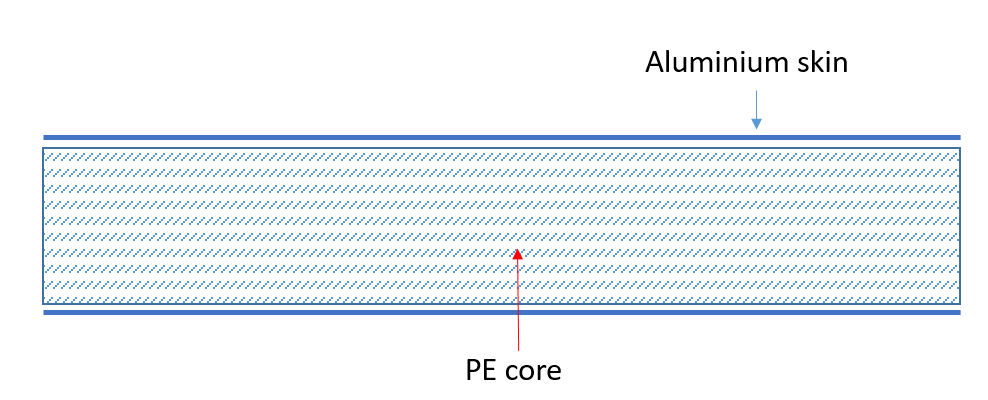
Next, we need to understand how these products are tested. ASTM is the American standard and as such the product has also been tested in other countries using different standards. Below is another datasheet showing fire performance over a number of country specific standards, which all vary slightly from each other.
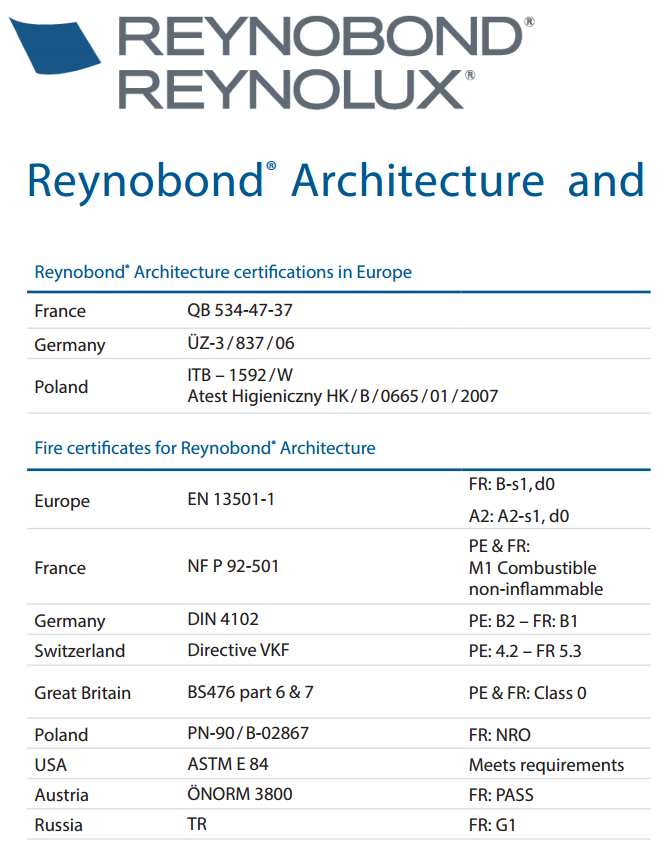
Confusing ain’t it? Welcome to the world of standards. They work a bit like political parties, in that everyone has their own idea on the best way to test something. The idea is the testing should simulate what is likely to happen when the product is used for a specific application in the real world.
To be able to understand what all this means, you need to go and look at the standards themselves. Thankfully someone has done this already so we don’t have to – thanks Bayer! (http://stephen-webster.co.uk/wp-content/uploads/2011/02/Fire-testing-overview-of-tests-per-country.pdf)
Lets start with the British results, to BS (British Standard) 476 part 6 &7. As you can see, and similar to the ASTM results on the first data sheet, both the PE and FR material have achieved ‘class 0’. What does that mean – in essence, it means it passes. The test is performed as shown in the diagram below (thanks again Bayer!)
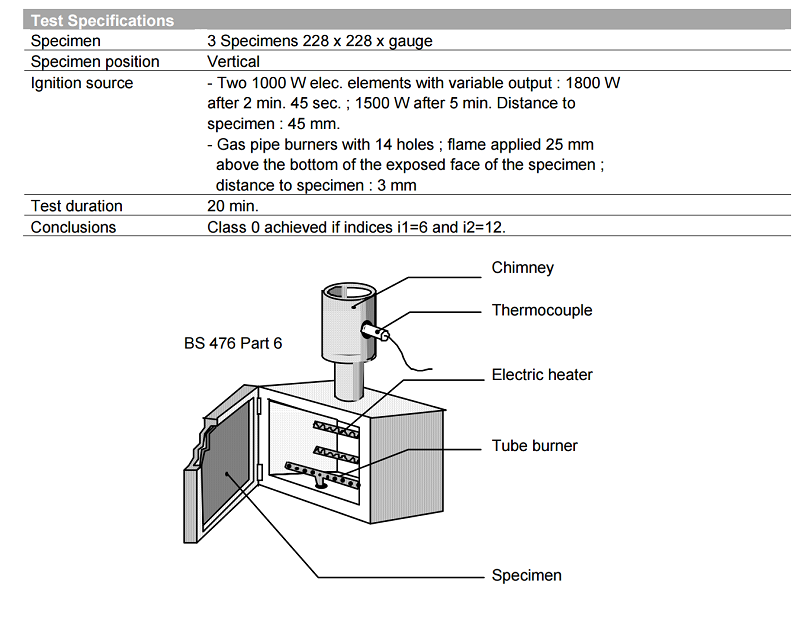
The ‘cladding tile’ is the specimen. It is placed in a holder and subjected to 20 mins of burning from a gas burner, with electric heaters also heating the surface. Go back to our diagram of the cladding tile and see if you can work out why the PE tile passes in the same way the FR one does…
If you haven’t picked up the problem yet, don’t worry, because the German results are very telling. In Germany, the tiles are tested to DIN 4102, and as you can see this time the PE and the FR tiles have DIFFERENT results. PE has been rated as ‘B2’ whereas FR has been rated as ‘B1’. If you have made it this far you really want to know what this means, and once again I can refer to the helpful guide from Bayer for guidance.
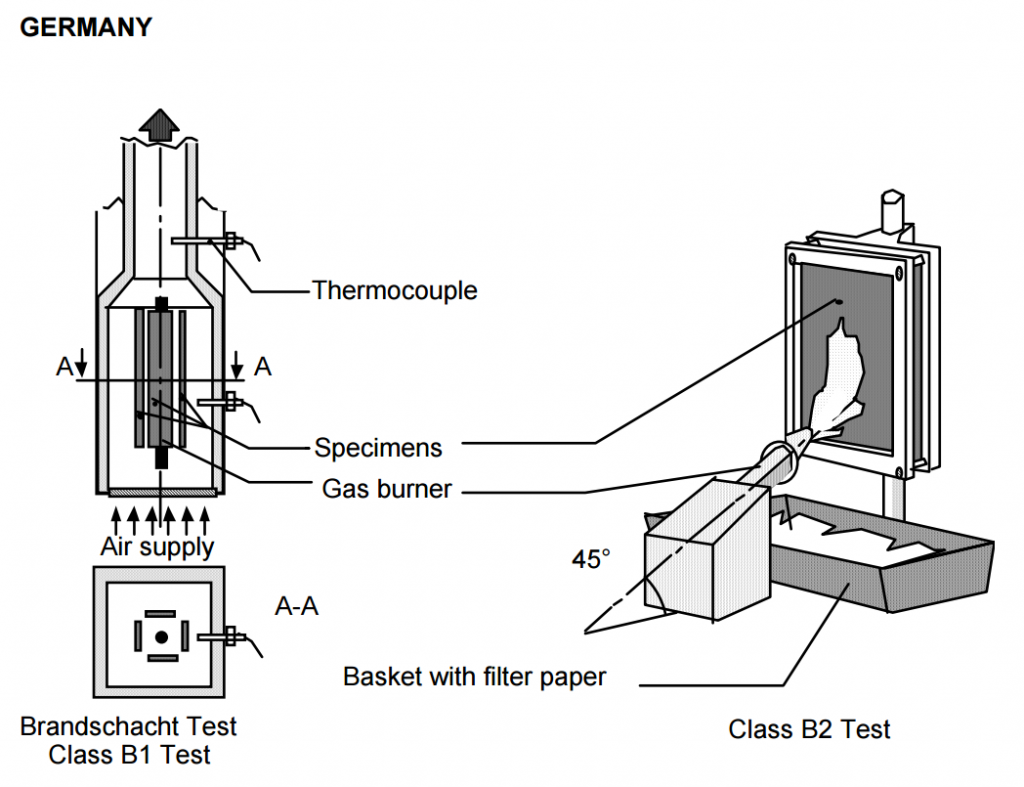
Here we have two test setups. On the right we have the test setup for the ‘B2’ test – on the left the setup for the ‘B1’ test.
The B2 test is broadly similar to the test carried out under BS476. A flame is applied to the middle of the tile. A product will be classified B2 if it passes the following;
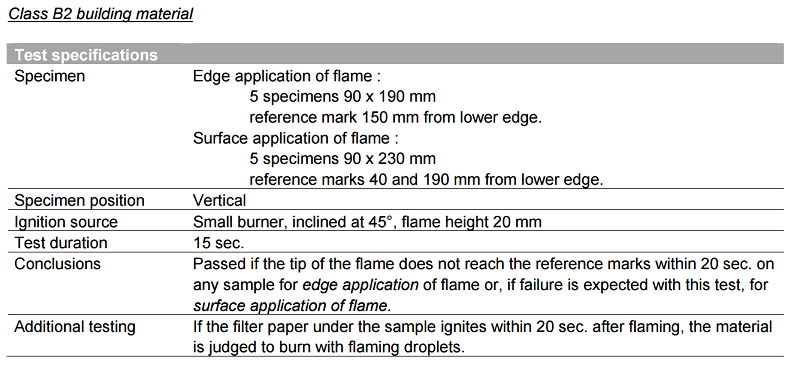
The PE material passed this according to the data presented. This is not surprising as it looks a less rigorous test than the BS476 standard.
However, to be rated a ‘B1’ product you have to pass the test when using the apparatus on the left. Note the location of the flame in this case is directly underneath the cladding tile. You probably don’t need to be shown what is likely to happen next, but we thought we’d recreate an example.
Now, we are not setup for DIN testing, but we are for UL94 (which is yet another standard!) so we used that calibrated apparatus to create the short video below;
If you have watched the clip there really is no need for words. Please bear in mind that we used a virgin PE with no additives to suppress fire (known as flame retardants) and we have no idea what was used in the material used at Grenfell. Therefore in no way should this rough test be used to claim the material was not fit for purpose. The data sheet clearly indicates the performance of the material, and that the PE material does not meet the Class B1 material requirements as shown below.
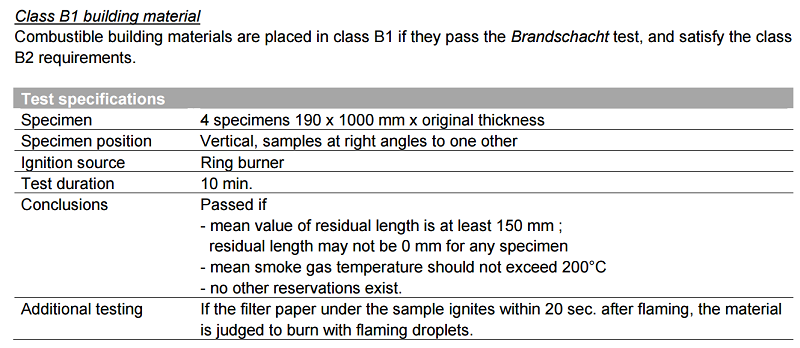
The question then is why was a PE cladding tile used?
This is the topic the public inquiry will have to look in to. There is a number of questions which will need to investigated and answered. It should also be clearly highlighted though that the standard as published has the following scope. Note the last sentence.
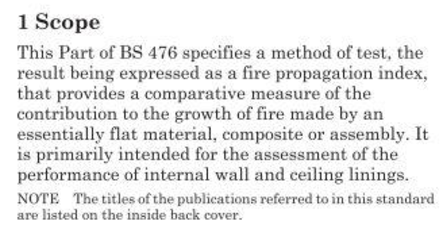
So was that even the right standard? Probably not if the tiles were (one of) the problems (which we don’t yet know). Another possible standard to use would have been BS8414 part 1 which looks at ‘combustible cladding materials’. (see https://www.allerdale.gov.uk/downloads/bca_guidance_note_18_use_of_combustible_cladding_materials_on_residential_buildings.pdf).
While people should not jump to conclusions too soon, it is clear there is a disconnect between different standards, and a disconnect between how these standards are interpreted by product manufacturers and designers. It is not the first time, and will not be the last, that Impact have dealt with issues such as this during our day to day testing across a wide range of industries.
Without carrying out a full testing programme on the actual material, and within the standards posted it is impossible for us to conclude anything, however from our standpoint the use of PE in an application where fire retardancy is required is a bad starting point.
Our hearts at Impact go out to all those affected by this tragedy and hope the inquiry is able to swiftly identify the cause, the issues and make changes to ensure this can never happen again.
If you are a manufacturer, contractor or simply concerned Impact are happy to discuss how we can help. Contact a member of our team today!
Be sure to follow us on Facebook, LinkedIn and Twitter to learn more!

